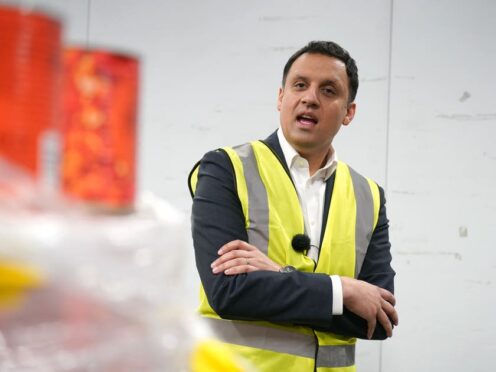
Scots are having to pay for “SNP and Tory mismanagement” through higher taxes, Scottish Labour leader Anas Sarwar has said.
Taxes will rise in Scotland on Saturday, with 49% of taxpayers paying more than workers in England.
The difference is £11 for those earning £30,000 a year and £111 for those earning £40,000, according to the Scottish Fiscal Commission (SFC).
Divergence begins for those earning £28,850 and above – equivalent to 51% of taxpayers – the forecaster said in its December report, with those earning more than £150,000 paying more than £5,000 more per year.
In its most recent Budget, the Scottish Government opted to increase the top rate of tax by 1p in the pound, as well as introduce an advanced band for higher earners.
Speaking ahead of a campaign event on Friday, Mr Sarwar said: “Once again working Scots are being forced to foot the bill for SNP and Tory mismanagement.
People with earnings over £28,850 in Scotland, slightly above median earnings, pay more income tax than they would in the UK. The latest policy decisions widen the gap further for those earning over £75,000 (the top 5 per cent of taxpayers). pic.twitter.com/cXIqC28Lno
— Scottish Fiscal Commission (@scotfisccomm) December 19, 2023
“Humza Yousaf is detached from reality if he thinks that 1.5 million Scots should pay more tax and oil and gas giants should pay less.
“Scotland is being failed by an SNP Government that is attempting to use income tax as a sticking plaster to cover for their woeful failure to grow our economy or manage public finances.
“Just like the Tories, the SNP is not on the side of working people.
“Under both the SNP and the Tories, Scots are paying more and getting less – while taxes keep rising, so too do NHS waiting lists.”
A Labour government, he said, would “put economic growth front and centre”, as he vowed to “end the culture of mismanagement and waste that has consumed both governments”.
Scottish Conservative finance spokeswoman Liz Smith accused Mr Sarwar of being the “Johnny come lately” of Scottish politics.
“His party backed the SNP on a string of their most disastrous policies and is only washing their hands of them now they have fallen apart,” she said.
“Labour voted for the income tax rises we now have and praised them as ‘progressive’.
“No-one is going to be taken in by this belated conversion. The Scottish Conservatives are the only party that has consistently opposed these punitive nat taxes and are committed to scrapping them.”
The Scottish Government says its tax policies “carefully balance the need to raise revenues to support our vital public services with the impact on taxpayers and the economy”, adding that its new advanced band will protect those who earn less and asks those who earn more to contribute more.
A spokesperson said: “The additional money raised through our approach to income tax delivers extra investment a wide range of services and social security not provided elsewhere in the UK, including free prescriptions and free higher education.
“Council tax is less in Scotland than in England, even before factoring in a council tax freeze for 2024-25.
“The Scottish Fiscal Commission estimates that the cumulative impact of Scottish Government income tax policy decisions since 2017-18 will raise an additional £1.5 billion in 2024-25, compared to if UK Government tax policy had been matched during that time.
“Anyone who advocates for removing Scotland’s progressive approach would need to be clear where in public services like the NHS the resulting loss of £1.5bn would come from.”

Enjoy the convenience of having The Sunday Post delivered as a digital ePaper straight to your smartphone, tablet or computer.
Subscribe for only £5.49 a month and enjoy all the benefits of the printed paper as a digital replica.
Subscribe